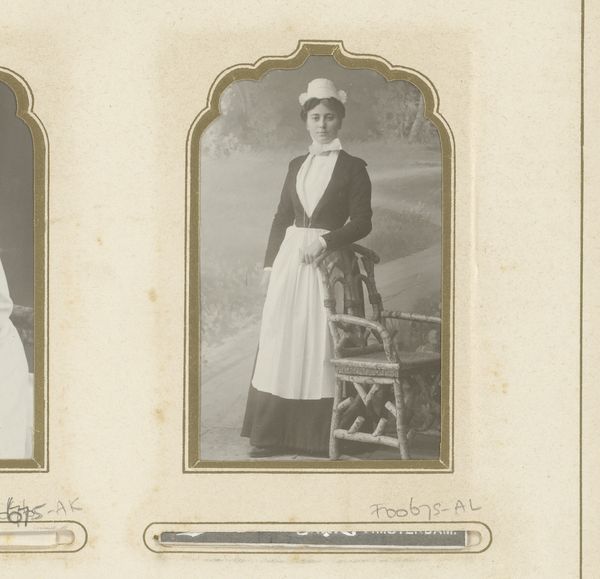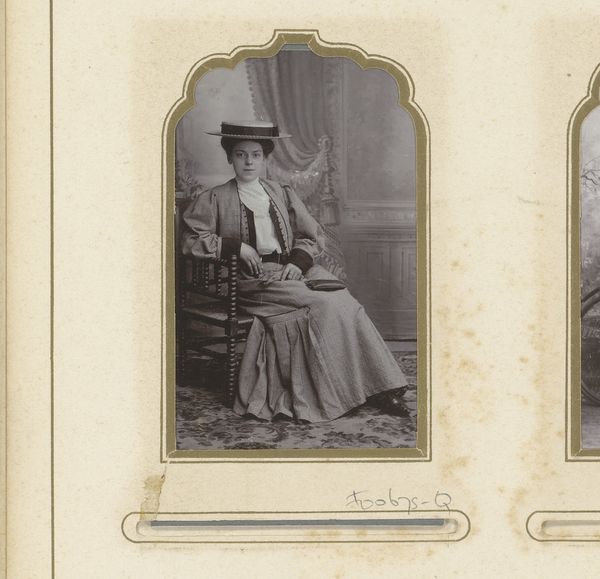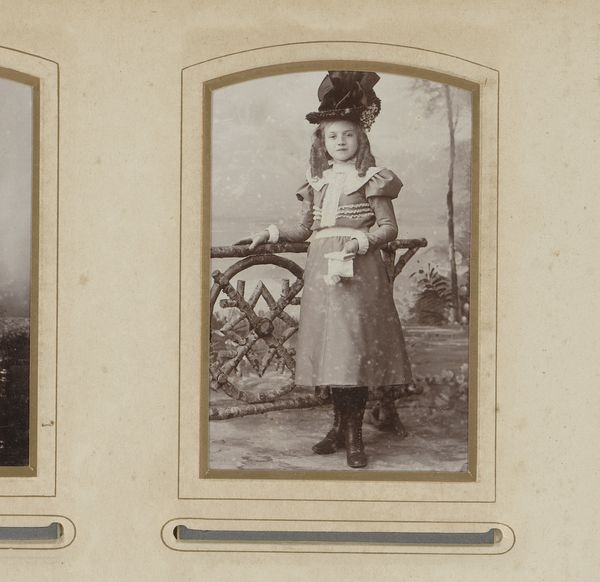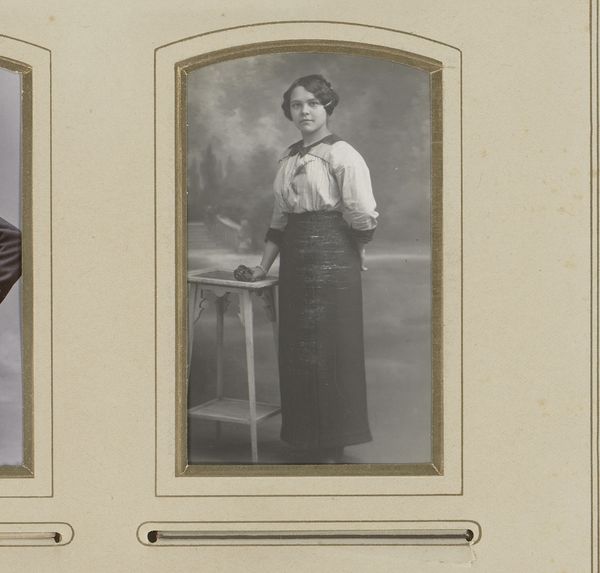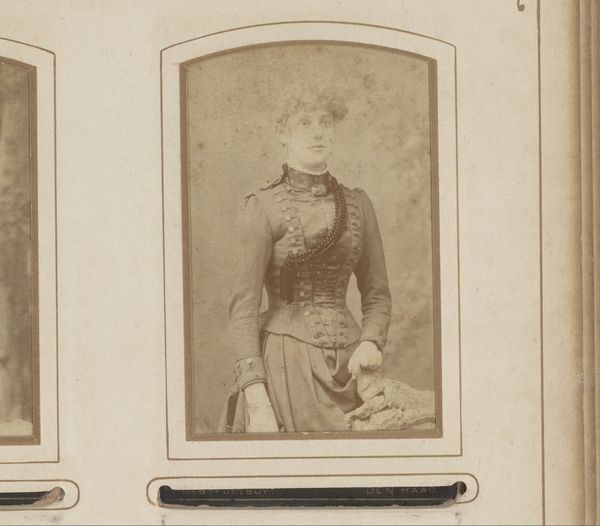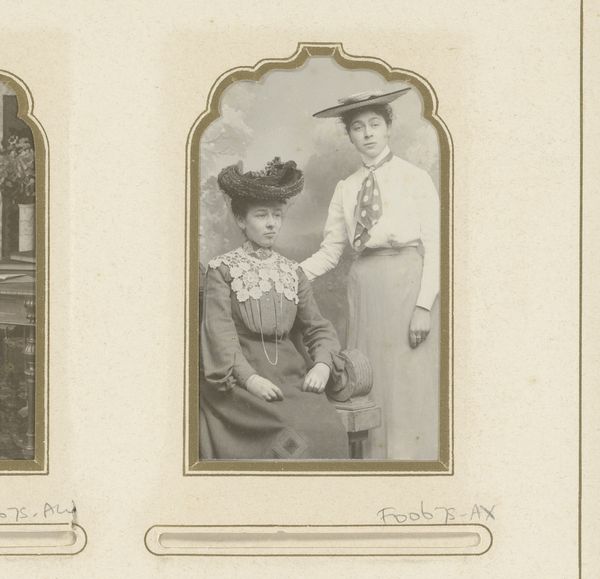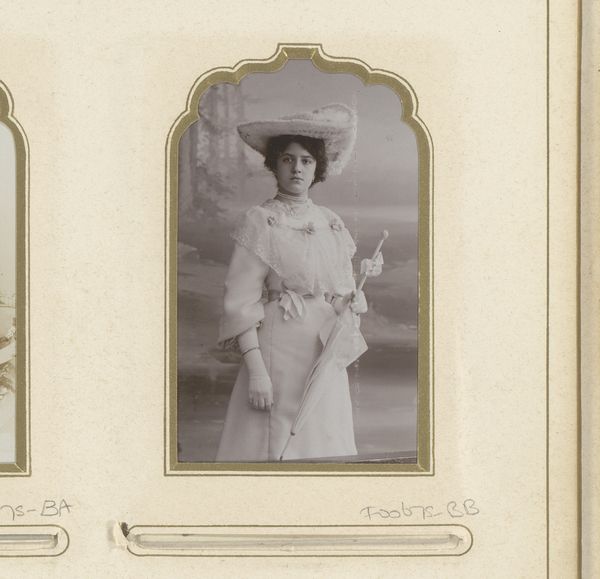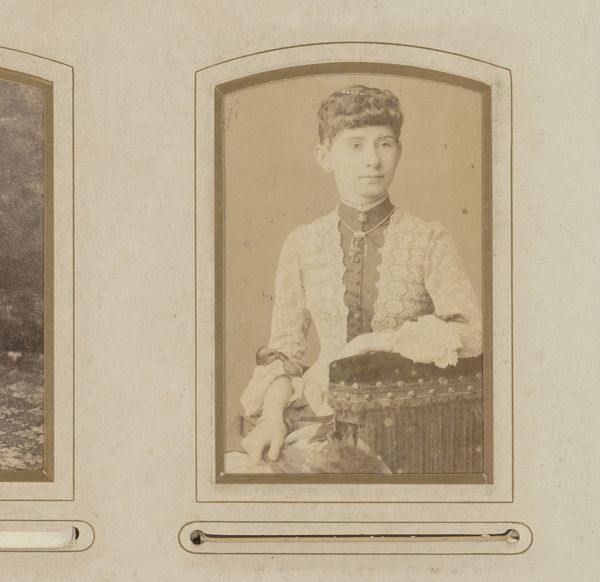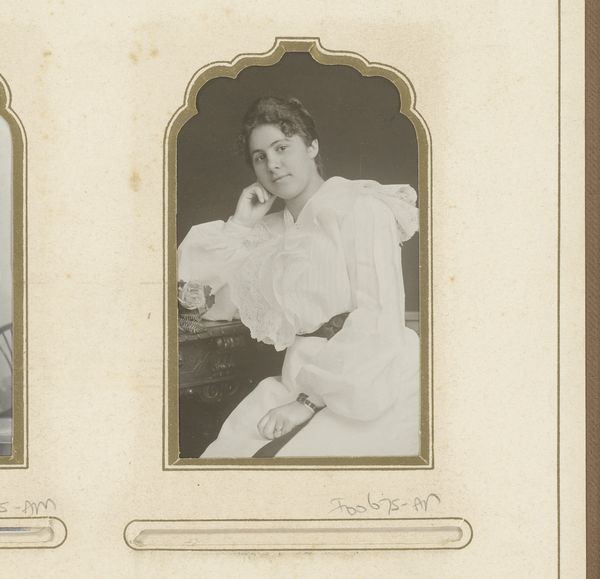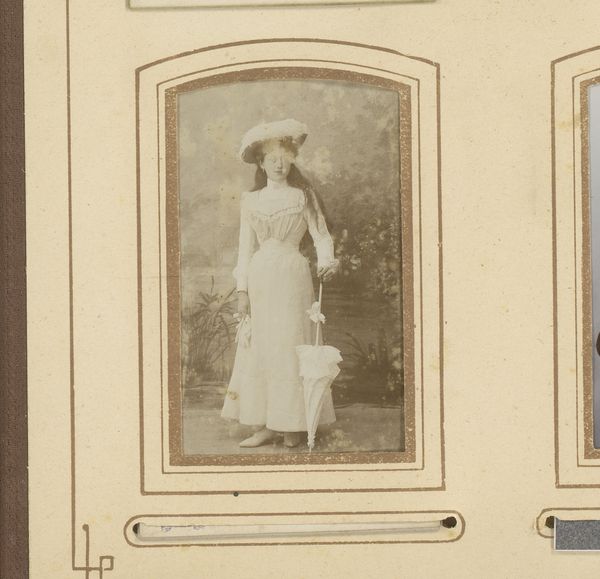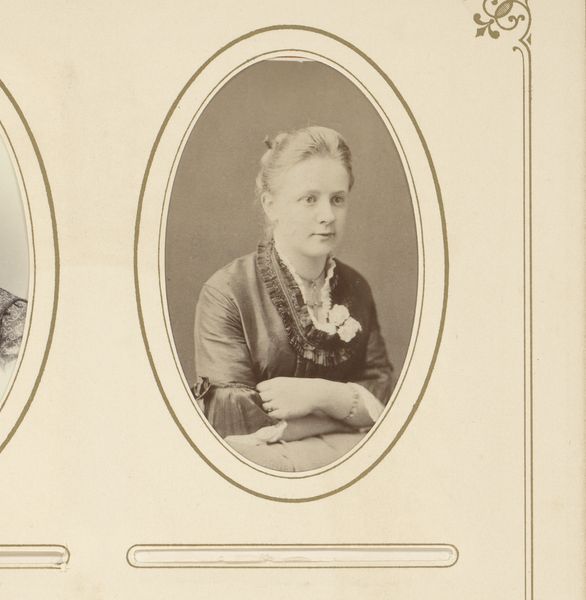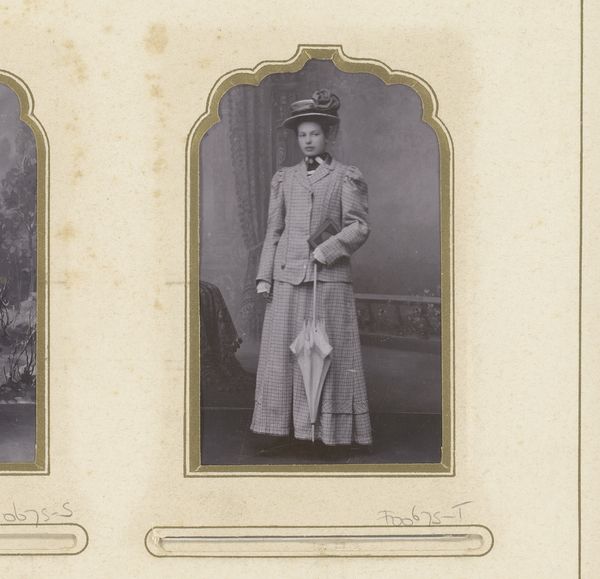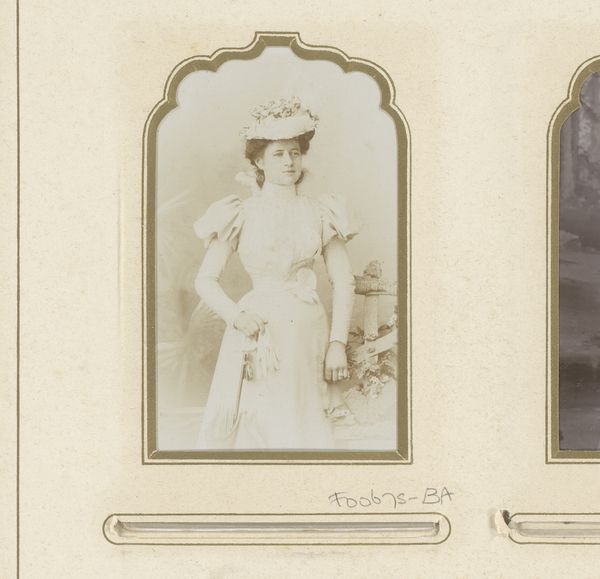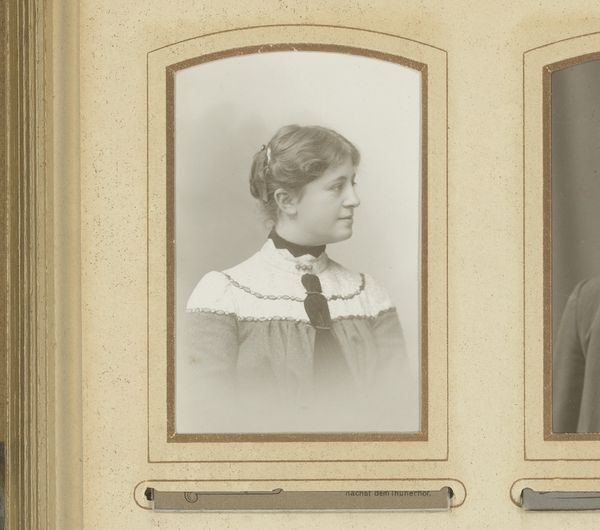
photography
#
portrait
#
16_19th-century
#
pictorialism
#
landscape
#
archive photography
#
photography
#
historical photography
#
19th century
#
genre-painting
#
realism
Dimensions: height 85 mm, width 51 mm
Copyright: Rijks Museum: Open Domain
Editor: Here we have "Portret van een staande vrouw met hoed en een hond zittend op een kruk," or "Portrait of a Standing Woman with Hat and a Dog Sitting on a Stool," created sometime between 1890 and 1920, likely a photograph by O. Sundberg. I'm immediately struck by the subject’s confident pose, and how carefully constructed the image feels. What do you see in this piece, in terms of the era it came from? Curator: Well, beyond its obvious formal qualities, what interests me most is how this image functions as a social document. It gives us a glimpse into the construction of femininity and class in the late 19th and early 20th centuries. Consider the woman’s attire: the hat, the tailored blouse, the long skirt. It’s a performance of respectability, but who is this performance *for*? Is this woman truly independent, or is her identity constrained by social expectations? Editor: I hadn’t considered it that way. The dog almost feels like another accessory in that performance, rather than a companion. Curator: Exactly! The dog, the stool, the backdrop – they're all carefully curated elements designed to convey a specific message about her status. Think about who had the resources to commission or even sit for such a photograph. How does access to visual representation become a form of power? This image, while seemingly straightforward, raises critical questions about representation, social class, and the performance of identity. Where would this woman place within that rigid social hierarchy? Editor: So, it's more than just a pretty picture of a woman and her dog; it's a statement. Curator: Precisely! By interrogating these seemingly simple portraits, we can unlock broader understandings of the complex social and political dynamics at play. And we can draw connections to the ways in which similar power dynamics manifest today through visual culture. Do you agree that power constructs who gets to be seen, and how they get to be seen? Editor: I absolutely agree! I'll definitely view portraits with a more critical eye going forward! Thank you. Curator: You're welcome! Remember, art history isn't just about aesthetics. It's a powerful tool for understanding ourselves and the world around us.
Comments
No comments
Be the first to comment and join the conversation on the ultimate creative platform.
